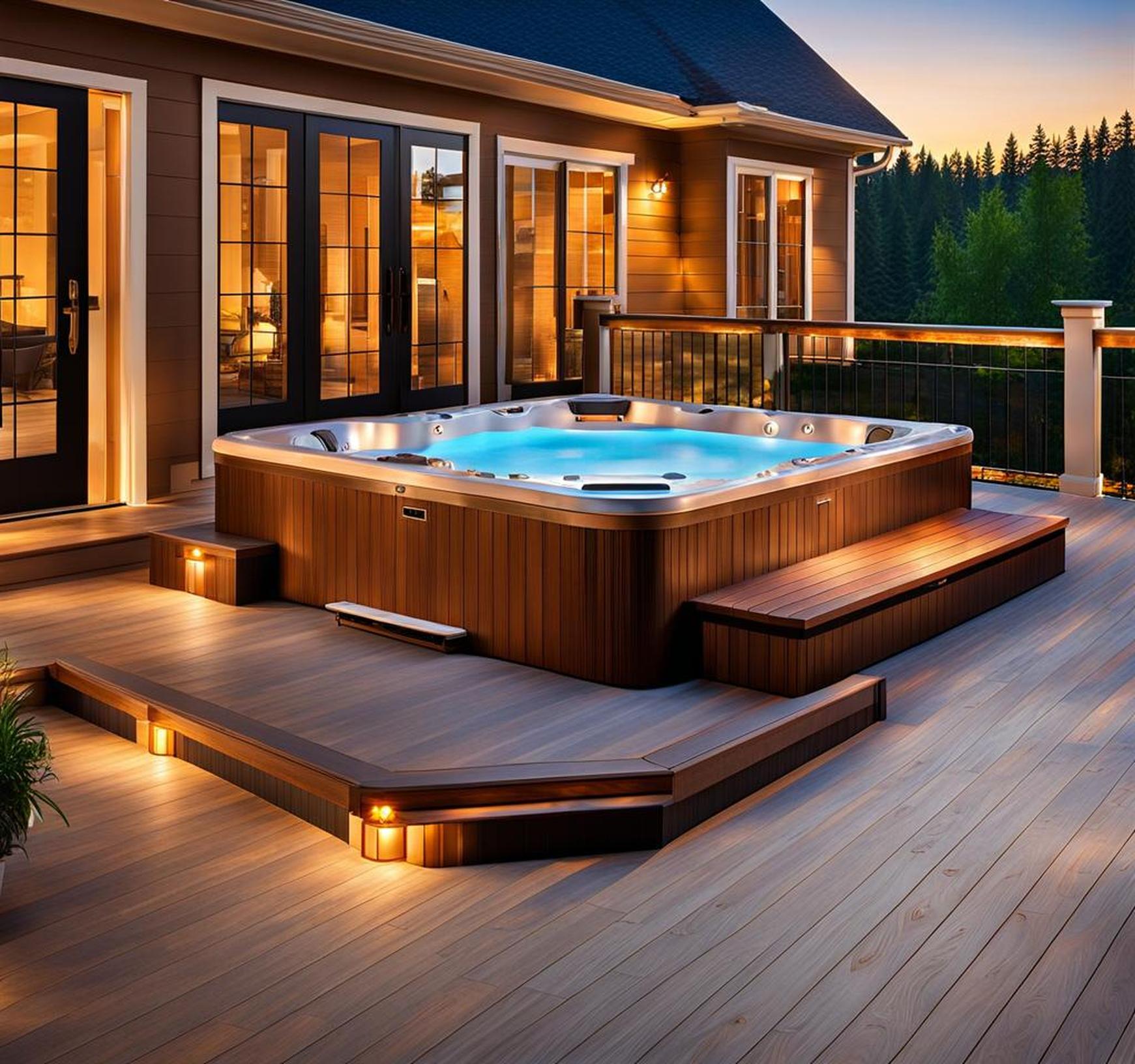Installing a hot tub sunken into your deck can take your outdoor living space to the next level. However, there are several structural considerations to account for to ensure a safe and successful installation.
Assessing Your Existing Deck
The first step is determining if your current deck can handle the weight of a filled hot tub installed below its surface. This involves looking at the load capacity, material durability, and structural integrity.
Load Capacity
You’ll need to calculate the maximum load your deck can structurally support. Factors include:
- Deck size and shape
- Type of framing and hardware
- Number and size of support posts
- Soil conditions and depth of footings
Then compare this to the filled weight of the hot tub model you want plus the total weight of expected occupants. A standard 6-person hot tub can weigh over 4,000 pounds when full. You’ll likely need to reinforce the framing with additional beams and posts to handle the load.
Material Durability
Rot resistance varies among wood decking materials. Pressure-treated pine is prone to decay over time when exposed to moisture. More durable, decay-resistant species like cedar, redwood, or composite boards are preferable for supporting a sunken hot tub.
No matter the decking type, sealing boards helps minimize swelling and warping from water splashing up from below.
Integrity of Support Posts
Support posts need sufficient diameter for max load capacity. Footings below the frost line prevent heaving. You may need larger footings or bracket hardware to bear a hot tub’s weight.
Preparing the Installation Site
Once you determine your deck can support a sunken hot tub, map out the specifics of the install site.

Layout and Dimensions
Factor in the hot tub’s length and width plus enough space for users to walk around it comfortably. At least 24″ clearance on all sides is typical. Consider easy access for cleaning and maintenance also. Railings around sections of the perimeter can provide support stepping in and out.
Digging the Pit
Excavating equipment like a backhoe or trencher simplify digging out the hole to sink the hot tub into. Walls may need shoring brackets during the dirt removal process to prevent cave-ins.
For a flush install, dig down approximately 18″ lower than the final height desired after positioning the tub.
Structural Framing & Reinforcing
It’s crucial to integrate new structural members level with the bottom plane of the deck boards:
- Sister heavier joists beside existing framing
- Attach strongback ledgers around the rim
- Add supplementary posts underneath for bearing weight
This distributes the load properly so the deck doesn’t collapse or sink from the weight of a filled hot tub pushing down.
Finishing Touches After Installation
Some final design details take the sunken hot tub from basic to luxurious. Tailor these to your preferences and needs:
Decking Around the Hot Tub
Use watertight backing rods before caulking between the tub lip and boards to shield outdoor decking from moisture damage. An expansion joint lets the decking flex without splitting.
Synthetic or stone flooring around the cutout withstands water better long-term.
Insulation Considerations
Heating loss can be significant for below-ground tubs. Adhesive foam panels attached to walls and rim joists reduce this effect before backfilling dirt. An insulating cover also seals in warmth when the hot tub isn’t occupied.
Steps for Convenient Entry/Exit
It’s key to plan for safe ingress and egress when accessing a sunken tub. Built-in corner steps on some hot tub models simplify climbing in and out. Or freestanding steps customized to deck height work too.
Handrails give added stability and prevent slips or falls, especially for children or seniors. Strategically placed grab bars around the tub perimeter also assist mobility.
Ongoing Care and Maintenance
While sunk-in hot tubs take a bit more effort upfront, keep them operating properly with regular upkeep:
Draining and Refilling
To maintain clean, sanitized water, change it out every 2 to 6 months depending on usage and number of occupants. This prevents buildup of dirt, oils, and bacteria.
It’s wise to install drainage pipes around the liner underneath so standing water doesn’t accumulate and penetrate the deck cavity.
Access Doors for Equipment
An access door integrated into flooring boards lets you check plumbing and electrical hookups easily for routine maintenance and winterization. It also enables repairs without fully dismantling the tub surroundings.
Watertight hinged panels prevent moisture seeping below deck level but allow you to inspect components when needed.
With careful planning and structural preparations, a custom sunken hot tub can seamlessly blend into your deck backdrop for an integrated backyard oasis.
But it’s wise to partner with a specialized installer or contractor to embed your hot tub properly. This ensures every base is covered for a successful flush mount integrating flawlessly with your landscape design for years of enjoyment.
